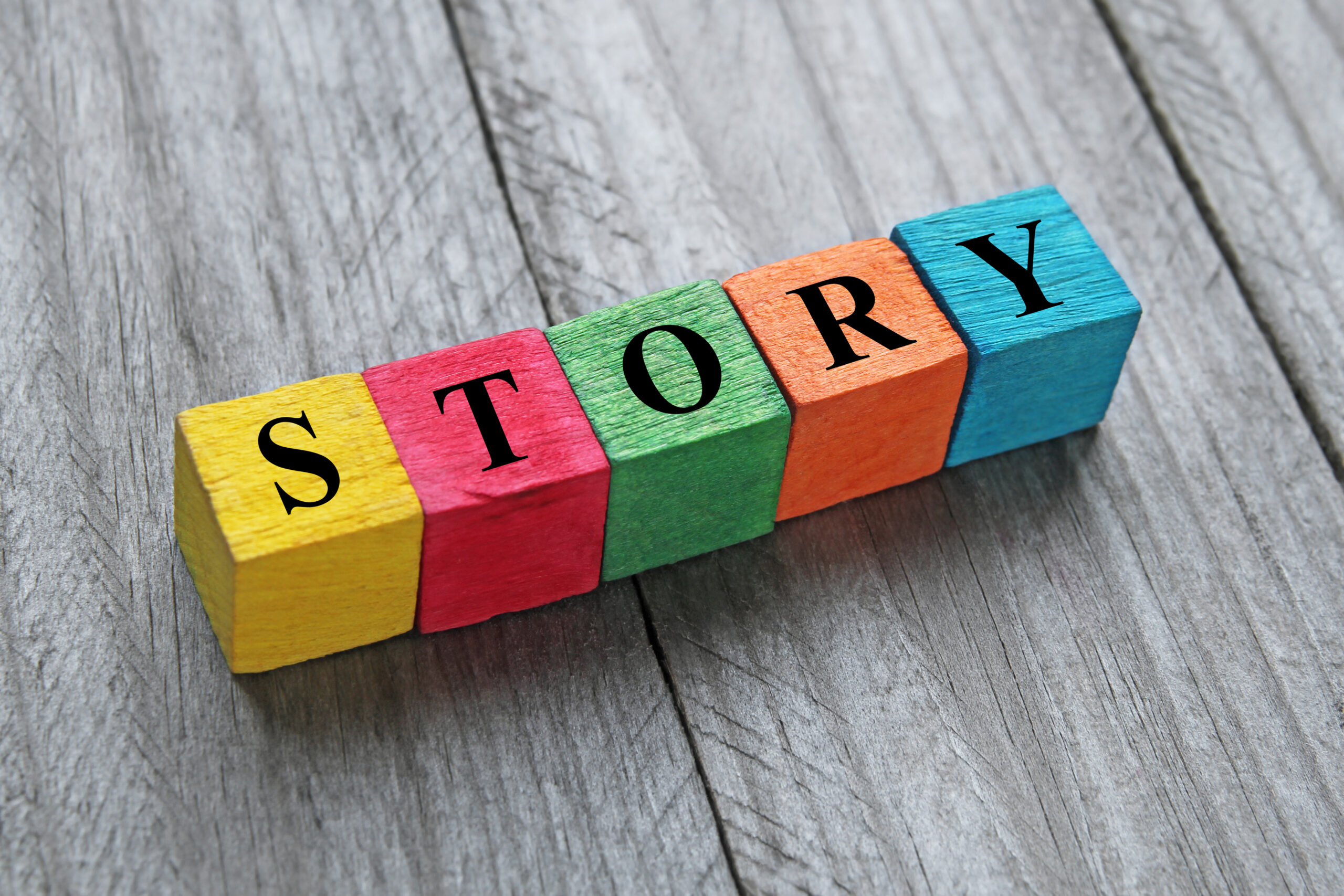 An emailed donor newsletter is a terrific way to communicate with your supporters, but many organizations waste the opportunity.
An emailed donor newsletter is a terrific way to communicate with your supporters, but many organizations waste the opportunity.
They slap it together, click “send,” and don’t give it another thought.
And not surprisingly, they don’t have very good open rates on their newsletter.
You see, when you consistently send a crappy newsletter to your list, you’re teaching people NOT to open it or read it. You’re training people to ignore future newsletters.
People don’t read newsletters because they have nothing better to do.
They read newsletters because there’s something worth reading.
Most newsletters are boring, full of jargon, and inwardly focused.
They don’t take the time to tell their stories in a compelling way and instead get bogged down in boring details that do not interest the reader.
They showcase themselves and carry on about how amazing their work is. (It truly might be, but really? Do you like it when someone brags?)
Instead of bringing donors in, nonprofits push donors away, by failing to remind the donor why they cared about the organization in the first place.
If you are going to take up space in someone’s inbox, you need to give them something worth reading. Consistently, month after month like clockwork.
Read that again.
An effective donor newsletter should make the donor feel great about supporting the organization.
The donor should say, “Wow! I love this organization – they do such good work!”
The donor should feel proud to be involved.
A well-done donor newsletter should make the donor want to stay involved and maybe even tell their friends about the nonprofit’s good work.
Something lit a fire in the donor’s heart when they made their first donation to your nonprofit. Your donor newsletter should fan the flames of that fire so the donor stays engaged.
But, most nonprofits miss the mark with their newsletter, probably because they throw it together at the last minute without much thought, just so they can mark it off their “to do” list.
I suspect you’re smarter than them (mostly because you’re here reading this!). So, let’s look at what it takes to put together a donor newsletter that will keep your supporters reading and giving.
Focus on Your Reader
Before you write a single word for your next donor newsletter, think about the person receiving it.
Where are they when they read it? What device are they on? What’s their life like?
If they’re the typical donor, their inbox overflows each day and they don’t have the time or desire to read anything long or heavy.
More than likely, they’re reading your newsletter on their phone in stolen moments like waiting at the doctor’s office or sitting in their car in the school pick-up line. They literally may only give your newsletter a cursory glance, so you have to plan it carefully.
Seriously, haven’t you done this? You’re on your way somewhere and traffic is bad. You’re sitting at a stop light so you grab your phone and browse through your email. Then, the light turns green and traffic starts to move. You toss your phone in the seat beside you and focus on driving. You might get back to that email you started reading… or you might not.
This is the reality with donor newsletters. You rarely have your reader’s undivided attention for long!
Keep that in mind as you put your donor newsletter together so you can create something that’s worth their time to read.
Hint: You’re not going to accomplish this at the last minute. Give yourself time and space to think and purposefully plan a newsletter that will delight your readers.
Also give yourself time to create a design that looks inviting. If your newsletter looks hard to read, people won’t read it. So make it attractive and on brand for your organization.
Okay, so what really MUST be included to hit the mark with your readers? After helping thousands of nonprofits, I can share the 4 things that make or break your next donor newsletter.
#1: A Story That Sucks
 Boring doesn’t work.
Boring doesn’t work.
Stories do.
So, share your best, most compelling story about a life that has been changed because of your organization’s work. This story is the beating heart of your newsletter and will literally suck the reader in, inspiring them to read the whole thing.
Look for stories like these:
- The student who achieved her way to college with support from your mentoring program.
- The family who overcame shame and accepted food from your food pantry with encouragement from a volunteer.
- The veteran who made a friend and started to feel more like himself again.
- The dog who started wagging his tail again after bonding with a volunteer.
Talk to staff and volunteers who work with the people or animals who benefit from your organization. Ask them to tell you about some of their favorite clients. Ask them about any appreciative texts they have received. These can often be developed into awesome stories.
Yes, it takes time to gather stories. But you need these for all parts of fundraising, so commit to taking the time you need to collect stories.
Once you have the details of a story you want to tell, think about how you want to tell that story. Some stories are just perfect in how they reflect your organization’s mission. They show donors exactly how your work changes lives.
These stories are gold. But even when you have a perfect story, you don’t need to go on and on in your donor newsletter.
People these days literally have the attention span of a goldfish (7 seconds I think I read somewhere).
That means you have to be choosy about the story, including only the most important and relevant details.
The 5-Paragraph Story Formula
Even your most golden story should be short – just five paragraphs, with each paragraph having just two to three sentences.
Here’s how to write a long-form newsletter story:
1. Introduce the person and the problem. “Marisol, a mother of two, contacted our organization when she had nowhere else to turn. She was behind on rent and bills and facing homelessness. She had a new job, but she needed help until her first paycheck arrived.”
2. Next, talk about the solution your organization provided. “We paid her rent, coached her in applying for SNAP, and referred her to a partner organization for utilities support. We worked with a church to provide formula, diapers, and household cleaning products.”
3. Next, share how this solution worked out for this person. “Within six weeks, Marisol had found her footing. She is now working full-time and things are looking up! Her baby is thriving, and her older daughter is doing well in school. She’s putting food on the table and for the first time, she’s excited about the future.”
4. Include a quote if you have one. “I am so thankful that I found someone who cared about my family,” Marisol said. “I have never felt so alone, and now I feel less alone and like someone is there for me and my kids.”
5. Finally, share a bit of context on how this story fits in with your organization’s mission. “Marisol’s story is not unusual. About 70% of the families we work with achieve financial independence within six weeks and need no additional financial support.”
Here’s another example:
“When Anna enrolled in our program, she was a junior who felt lost, unsure if she could go to college or if she would even graduate from high school.
Our academic coach got her on a plan to graduate, including tutoring every day after school. Within two semesters, her GPA rose from a 2.5 to a 3.1. Her college counselor helped her make a list of potential colleges, and Anna went on two campus visits. She fell in love with Fort Valley State and their medical technology program.
We matched Anna with a mentor to make sure she put forth a strong application and applied for financial aid. Anna accepted an admission offer from FVSU and will start her college education in August with a scholarship covering 85 percent of tuition, room, and board!
We are so proud of Anna! We will continue supporting her for four more years and be in the stands cheering when she graduates.
Anna is one of 77 students graduating in May. Of those, 71 are headed to college, and three are enlisting in the military. The remaining three are undecided about their futures, and we will help them navigate this transitional time until they find their path.”
See how powerful that story is? It’s heartwarming, full of hope, and short.
Shorter Stories Can Pack a Punch
 Some stories do not lend themselves to this formula. People’s lives are complicated, and many people benefit from your work but do not have the perfect happy ending.
Some stories do not lend themselves to this formula. People’s lives are complicated, and many people benefit from your work but do not have the perfect happy ending.
But their stories still resonate!
A story does not have to be a transformation of a person’s life. A story can reveal a tiny victory or revelation, brought about by their involvement in your organization.
The beauty of these stories is that they can be even shorter:
“Joey arrived at our program feeling broken and defeated by several years of unemployment, unstable housing, and an uncertain future. Like many veterans, he wasn’t sure where he fit in. Through his friendship with Mike, a volunteer who has walked in Joey’s shoes, he regained his confidence, his sense of humor, and hope for the future.
“Going fishing with Mike was the highlight of my year,” Joey said. “I felt like a real person, just a guy going on a fishing trip with a friend.”
Said Mike: “We had a great time, and we caught a lot of fish! I value the time Joey and I have together and the opportunity to give back.”
That’s it! That’s the story. It’s beautiful on its own and does not need to be any longer.
We don’t know if Joey now has a job, and honestly, we don’t need to know. We know he went fishing with Mike and had a great time, that he felt a bit like his old self. What a gift!
This story captures a universal emotion – a feeling that is common to most of the population. Most of us know what defeat feels like or to have an uncertain future.
A short story that connects with the reader’s heart through a universal emotion is one that will pull people close.
Here’s another one:
“Bagel was rescued from an abusive home, and was so scared when he came here that he shivered in his kennel all day long, rarely sleeping. Longtime volunteer Val sat with Bagel and talked to him. He slowly warmed to her patient, quiet demeanor.
Val got Bagel out of his kennel, on a leash, and socializing with other dogs and humans. We knew he had turned a corner when we saw him taking an afternoon nap, sleeping on his back in the middle of his kennel.
Bagel is now in a foster home, waiting for just the right person to adopt him. He will do best with a human who can spend a lot of time with him and provide a calm environment.
Says Val: “Bagel is proof that many of the dogs who come here just need time to build trust, come out of their shells, and learn to be dogs.”
Bagel’s story isn’t over. Hopefully, you will have a longer success story to share later when he finds his forever home. But he has come a long way thanks to Val, and you can celebrate that.
Okay, just because this is fun and I bet you like examples, here’s another one:
“Alice signed up for our literacy program at the urging of her daughter. Newly retired and about to be a grandmother, Alice wanted to improve her reading so she could read to her grandchild and stop feeling ashamed. Marci, a newly trained volunteer, was so excited to work with Alice.
“We have a lot in common,” said Marci, who also retired recently. “Alice just needed a few reading strategies, such as using an index card to keep her place, and the right books to keep her from getting frustrated.”
When Alice achieved her goal of reading a mystery by Mary Higgins Clark, she and Marci celebrated by going to the movies together. They wanted to see a mystery, but they settled for a rom-com. “We laughed a lot,” Marci said.”
This story reflects a tiny, lovely moment of connection. Your donors will love reading about Alice and Marci and their heartwarming connection.
Micro Stories Can Show Impact, Too
Micro-stories are even shorter, but they are effective and work well in donor newsletters.
A micro-story is often what you end up with when you cannot speak with the person who was impacted, when all you have to go on is what the staff person or volunteer tells you.
That’s okay!
You can still pack a punch by focusing on what your organization did that made a difference in the life of a person or animal. Here are some examples.
Example 1: “The Baker family did not want to come to a food pantry for help, but at the urging of their church, Mr. Baker made an appointment. A volunteer gave him a basket and invited him to choose the foods his family would enjoy. Mr. Baker said the experience was different than he had imagined, and he would have signed up sooner if he knew he could choose his own food. He left with a week’s worth of food, including sandwich supplies for his teenagers and his wife’s favorite, pasta.”
Example 2: “We are so proud of Melody, an eighth-grader who came to us last year testing two years behind in most subjects. But as soon as our volunteers started tutoring her, we realized Melody would catch up quickly. Now she is a leader in her grade, always asking questions and wanting to learn more and more. When we asked Melody what she wanted for her future, she used to shrug. Now she confidently says she wants to work in a hospital as a nurse or maybe even a doctor. We can’t wait to see what’s in store for Melody!”
Example 3: “When Cody came to our shelter, he needed surgery to remove a benign tumor on his back leg. The tumor was so big, he could barely walk. After the surgery, Cody seemed nervous about putting weight on that leg. Volunteers worked with him every day to build strength and confidence. At his follow-up appointment, the veterinarian said he was 80 percent recovered and on his way to a full recovery! We cannot wait to send Cody home with a forever family as a healthy dog who can walk, run, and have fun.”
Storytelling for fundraising must be done with the utmost respect for those featured in the story. Start by getting permission to use their story. Make sure they feel comfortable with the way you’ll tell and use the story. Offer to use a pseudonym if they would feel more comfortable, and to change or eliminate any details that might be too identifying. Ask if they would be comfortable sharing a photo. Some people are excited for the opportunity to give back to the organization that helped them. Others value their privacy.
If you cannot ask the person because they are no longer receiving services and you can’t get in touch, change all identifying details and tell the story from the perspective of the staff person or volunteer who worked with the person.
Stay true to the story, focusing on what your organization did to make this person’s life better. When you get in the habit of collecting and telling stories, you will find wonderful stories everywhere you turn.
#2: Visual Evidence
 When donors open your email, they are more likely to skim than read.
When donors open your email, they are more likely to skim than read.
And if it’s a solid page of text, they’ll close it immediately.
To entice someone to read your newsletter, it MUST look interesting and that means using good photos and video.
You don’t need a ton for your donor newsletter – just 1 or 2 photos for your story and maybe 1 or 2 more for other parts of your newsletter.
Again, treat people with respect and get their permission to use their face. Get signed release forms from everyone in the photos and videos.
If privacy is an issue, try taking interesting photos that don’t show faces. You can capture just the feet of children waiting for a puppet show to start. You can capture children from behind as they swing on a swing set or slide down a slide.
At a food bank, you could show side-by-side photos of a full shelf before the pantry opens and an empty shelf afterward. The reader will be struck by how much food you give away in just one day.
Take lots of photos then choose the best ones to use. One or two really powerful photos can tell the story much better than words in some instances. If you have too many photos, your newsletter will feel cluttered.
So, choose the best, strongest images you have of your organization’s work in action.
No photos of smiling donors with their oversized checks. No photos of your executive director shaking hands with the mayor at an event.
Your photos should say: “The work we do changes lives.”
Even more powerful than a good photo is a video. A short video of children playing on a new playground or volunteers unpacking food boxes will do the trick.
I once got a newsletter with an embedded video of a caravan of pickup trucks transporting supplies the organization had collected for people displaced by a natural disaster.
It was powerful to see all those trucks, one after the other, and that video stuck with me. Moments like this happen every day, we just need to think to capture them on our phones.
You have video moments happening in your nonprofit every day. Start looking for them and you’ll find them.
#3: Engaging Action
Make reading your donor newsletter an interactive experience by giving supporters something to do.
Include a link to your blog where readers can find a longer version of your main story. Some people will love the chance to read more or see additional photos!
You can include a link to sign up for upcoming volunteer orientation or activities for those who want to roll up their sleeves.
You can invite people to visit a social media channel for a special story or video there. Don’t just say “Like us on Facebook.” That’s boring. Instead, say “Catch our Puppy Pick video on Facebook to see which team our puppies think will win the Super Bowl this year.”
Be careful about including a link to your wish list or mentioning Amazon Smile or flat out asking for a donation. Your newsletter is meant to be a feel-good part of fundraising and fulfill part of the 3:1 Ratio so your donors never feel overasked. If you add a Donate Button or Ask people to spend money on you, it just became an Ask and you lost all your feel-good points.
You have plenty of other times when you can ask for money. Don’t do it in your donor newsletter.
#4: Invite Their Feedback

This sounds so simple and obvious, but most donor newsletters have no way for people to ask questions or provide feedback.
Make it easy for donors to contact you. At the bottom of your newsletter, provide them with a clickable link to your website, clickable links to your social media accounts, a general email address, and a phone number.
Be sure to double check the links before you send out the newsletter just to make sure they work. You don’t want to frustrate someone who is curious about what you post on Facebook because the link doesn’t work!
I am always surprised and disappointed when I open a newsletter and I cannot find contact information or the social links are broken. Don’t fumble on the one yard line!
The Bottom Line
Your donor newsletter is your main vehicle for communicating with donors and building the relationship. It’s a great way to provide information and even educate donors about your nonprofit’s good work.
You are 100% in control of what you tell them. Give them the news they want: the ways your organization is changing lives. That’s why donors give.
Make it look good, use a good subject line that doesn’t include the word “newsletter,” and test it carefully before you send it out. Be sure to leave out all the crap that no one really cares about so you can send the best newsletter possible.
You don’t have unlimited time, so you want to focus on what matters, and what matters are the lives you are changing. That really is what it’s all about!






Leave A Comment